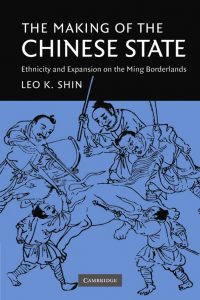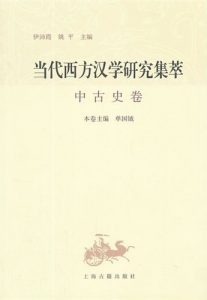Recollecting a Chinese Hero
 How has Yue Fei (1103–1142), the celebrated Song-dynasty loyalist, come to be viewed as the quintessential Chinese hero? And what have been the ways through which the famous twelfth-century general has lived on—at least in the imagination of much of the Chinese-speaking world? This book-length study is not intended to be a traditional biography of Yue Fei; nor is it primarily an analysis of the hagiography of the Song general. Rather, it is at its core an examination of the means and mechanisms through which the past was transformed into historical narratives, which in turn were rendered into various claims of identities. This then is a study of processes, not essence.
How has Yue Fei (1103–1142), the celebrated Song-dynasty loyalist, come to be viewed as the quintessential Chinese hero? And what have been the ways through which the famous twelfth-century general has lived on—at least in the imagination of much of the Chinese-speaking world? This book-length study is not intended to be a traditional biography of Yue Fei; nor is it primarily an analysis of the hagiography of the Song general. Rather, it is at its core an examination of the means and mechanisms through which the past was transformed into historical narratives, which in turn were rendered into various claims of identities. This then is a study of processes, not essence.The Making of the Chinese State
This is a study of empire-building in Ming-dynasty (1368–1644) China. It is about how the centralizing state sought to incorporate the border region in the south, and it is about how agents and representatives of the state engaged in such an enterprise. China’s “march towards the tropics” is no doubt a story of colonization and homogenization, but just as significant, this study suggests, it is also a tale of demarcation and differentiation. The story told here, however, extends beyond the imperial period. Just as Ming-dynasty rulers considered it essential to reinforce a sense of universal order by demarcating the “non-Chinese,” leaders of the Chinese Communist Party have also found it necessary to maintain the myth of a unified multinational state by officially recognizing a total of fifty-six “nationalities.”
當代西方漢學研究集萃
The goal of Selected Contemporary Western Scholarship on Chinese Studies (Dang dai xi fang Han xue yan jiu ji cui), a five-volume series published by the highly-regarded Shanghai Ancient Books Publishing House, is to bring to the attention of Chinese readers some of the central intellectual concerns of historians of China in the West. The volume on the “mid-ancient period,” for which I am responsible, is designed to take into account the long stretch of time between the fall of the Han dynasty in the early third century to the so-called High Qing era in the eighteenth century, an admittedly nearly-impossible task (why the volume on “modern history” ultimately failed to materialize is itself a story of note). Since I cannot possibly include all that I deem worthy, I have chosen to highlight in this volume the historian’s perennial concerns about time and space—how should one talk about time in China, and how should one make sense of the space we call “China”?


